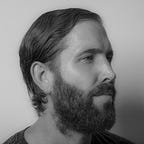Variations on a theme.
Here I present you with 24 images generated in Processing. Every day I would generate around 24 images. Why 24 images? Because that is the number of frames in a single second of video. At a rate of 24 frames per second at least. Some days I would generate as many as 100 images or frames in processing but it took me quite a while to gain the control over the variables to generate the kind of images I wanted to generate. I had a few hang ups along the way. At first I could only generate .pdf or .png files which aren’t great for making a video. For the life of me I could not get jpegs or Tiffs to work in my code. With a little help from RJ I was able to start creating .tif and .jpg files. My final video is made using 120 individual frames.
I approached the image making process as I would a painting. I wanted color and form to be somewhat expressive which is a tall order when you are using simple shapes. But since I have a history of making experimental films and videos I knew what relationship each frame would have with the next and I had a little bit of an advantage. That’s why you will often see that the video oscillates between dark and light frames. I have always been interested in the mechanics of seeing. Afterimage is a phenomenon that I am taking full advantage of here. The frames are passing by our field of vision faster than our retinas can recover so we perceive colors that are not really there. It may be too short of a clip to get the full effect but the proper way to watch this video is to play it on a loop and in full screen mode. Allow your eyes to relax and just let the looping video wash over you. In this space each individual viewer will be seeing something slightly different based on their genetics and the way cones and rods are placed in each individuals eyes. Your eye will try to make sense of the input but since it can’t you will get colors from the afterimage of the previous frames going by and these effects will be unique to each viewer.
Repetition was my guide when generating images in processing. It took a while to understand what changes numerically would have what effect on the resulting image. After doing it many times over many days I began to understand the effect each variable would have on the final image that was output. I began to understand the numbers. I began to feel that I was not randomly selecting numbers but that I really had control over the image making process. I would oscillate between thick and thin strokes for the shapes. I would also oscillate where the shapes were in space and where they were in relation to one another. And I was also sensitive to the colors of each frame in relationship to the frame it preceded and followed. This is where I really began to enjoy the process. I began to think of the variables in a similar way to the variations your hand and wrist might make on the plane of a canvas. Especially the variables that control where in space each shape was and their size and angles. The individual images are not that impressive but their relationship to each other when played in sequence makes them come alive in a way.
RJ’s coding help lead me to a patch that used the location of the mouse on the screen to generate the color of the shapes. The x and y coordinates of the mouse filled in the variable numbers for the rgb colors and using the S key to save file allowed me to change color rapidly and save each image quickly. This let me to focus my mental energy on the size, stroke, and location of the shape as well as generate images at a faster rate. I began to try to control the shapes in a way that I could place them within one another and have control over the overall composition of the final video to a greater degree. I enjoy this kind of process. Two weeks ago the code might as well have been Sanskrit on my screen but after much repetition I feel like I really have a grasp on this process. I am still in the very early phases of understanding code but it showed me that to gain any kind of control over this process, repetition is going to be the key.
The most profound part of this process for me was taking a simple code that RJ presented to us in class and run with the concepts to generate something new that is as potentially expressive as any other form of image making. The simple parameters allow for endless variation and this is where the real power of coding reveals itself in my simple process.
